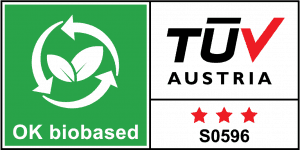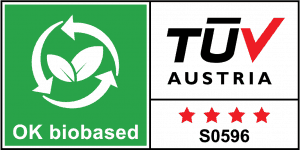Fashions come and go but nature will always remain.
We set ourselves the goal of designing and creating the first mannequin made from natural and biodegradable materials.
The pursuit of quality has always been at the centre of our work. There can be no quality without responsibility. With this in mind, in 2012 we started a research project dedicated to investigating how we can reduce the CO2 emissions of our mannequins.
For this we instructed the Politecnico of Milano to conduct the analysis of the life cycle of our mannequins, examining and measuring the impact of each stage of our work: from pre-production to industrial production, packing and dispatch of the products around the world, to their end-of-life.
Based on these results, we defined a strategy dedicated to act on the factors responsible for the largest environmental impact of our product. We have submitted materials and coatings to the most severe tests to verify the value, accommodating strict controls and audits that have helped us to improve in each sector.
Our manufacturing operations were assessed against Eco-Age’s GCC Principles of Sustainable Excellence, covering social welfare, environmental protection, training provision and security for workers.
BPlast and BPaint are not a point of arrival, but a first step towards a different way of thinking about our work, to combine ethics and aesthetics and testify that a different future is possible.
We chose as partners some of the most innovative materials research bodies for the development of bio-based polymers and natural paints that led us to get the BPlast: a Bio Polymer made for the 72% from sugar cane and BPaint, a range of paints 100% of vegetable origin.
It has been a difficult path full of surprises, but thanks to commitment and expertise we are able to offer our customers a product which is environmentally conscious and aesthetically impeccable.
Technical Information
Four years of research led to the selection and registration of a PLA biopolymer as the most appropriate material for manufacturing Bonaveri mannequins.
BPlast is a bioplastic consisting of 72% sugarcane derivative. It has obtained 3-star OK BIOBASED certification from Vinçotte of Belgium.
Compared to commonly used petrochemical plastics, manufacturing mannequins in BPlast makes it possible to reduce CO2 emissions significantly.


BPaint is the first-ever biocompatible paint made solely from renewable organic substances.
BPaint consists of 100% natural, raw materials. It does not contain any petroleum derivatives, not even in low concentrations. This product is a total innovation: it offers the same performance levels as petroleum-based paints while using only natural substances.
BPaint contains
- plant resins and oils;
- plant-based surfactants that do not contain phosphorous;
- 100% vegetable solvent obtained from orange peel using physical processes;
- cobalt-salt- and naphtha-free desiccants based on a new water technology.


The Politecnico di Milano - Gruppo di Ricerca DIS - Design and system Innovation for Sustainability - Dipartimento DESIGN LeNS – the Learning Network of Sustainability –conducted the life cycle assessment of the Bonaveri mannequins to map the company’s environmental footprint and to then define the times and tools to be able to reduce it over time.
The research team, coordinated by Professor Carlo Vezzoli, worked according to the Life Cycle Assessment (LCA | ISO series 14040, 14044, 14045, 14047, 14048, and 14049 standards) method that makes it possible to identify impacts in relation to the phases and processes involved in the system-product’s life cycle. Environmental impact assessment, in particular, aims at laying the foundations for determining the priority indicators for engineering and design.
The assessments were collected in the “Manuale di linee guida per la progettazione a basso impatto ambientale dei manichini Bonaveri” [Guidelines for Low-Environmental Impact Design of Bonaveri Mannequins] prepared by the Politecnico in line with the LCD (Life Cycle Design) approach and ISO 14062 – Environmental management - Integrating environmental aspects into product design and development.
The aim of Life Cycle Design (LCD) is to reduce resources used and emissions throughout the product’s life cycle (pre-production, production, distribution, utilization and disposal) in relation to the functional unit.
DEFINING THE FUNCTIONAL UNIT
In order to conduct the life cycle assessment of Bonaveri mannequins, the first step was defining the functional unit, that is the service/function that the mannequin provides. This makes it possible to compare the environmental impact of different, but functionally equivalent systems – in other words, all the processes are assessed in relation to an equivalent function. The LCA of the Bonaveri mannequins inventoried all the processes involved in each phase of the life cycle. Specifically, the study focused on:
Pre-production and production:
- producing the materials
- processing those materials to transform them into components (including work done outside the Bonaveri facilities)
- wastes from the processes
- waste disposal
- transporting semi-finished goods (to-and-from suppliers and Bonaveri).
- distribution:
- life cycle (pre-production, production, distribution and disposal) of primary and secondary packaging materials
- transporting the finished product from Bonaveri to its destination – the client’s warehouse and/or to where the mannequin will be used – in a sales point or display center
Utilisation phases:
- service: maintenance, onsite work and repairs, replacement – including transport and life cycles of the replaced parts.
Disposal phase:
- end-of-life processing and treatment of Bonaveri mannequins.
